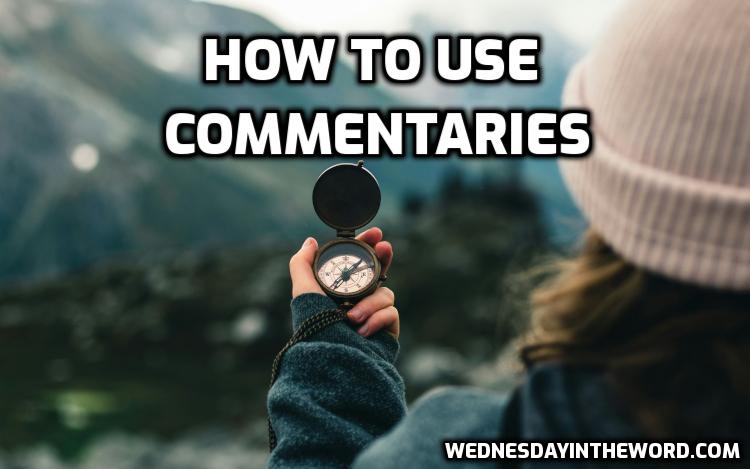Commentaries are like hiking with a seasoned guide. You still have to hike. Start with Scripture, then invite a few experts to check your bearings.
Bottom line: Commentaries are helps, not substitutes for your own work. Use them after you’ve observed the text, traced the flow of thought, and asked your questions. Then compare what you found with a few good voices. You can also use them when you get stuck to get yourself unstuck.
When to open a commentary
- After observation + outline. First, read the whole unit, mark connectors, and draft an analytical outline so you can follow the author’s argument. This guards you from letting someone else “do the thinking” for you.
- After you’ve listed questions. Let the questions you couldn’t answer from context become your agenda for commentary work.
- As a confirmation/comparison step. Commentaries can “get you unstuck” or confirm your reading, but they should not replace your own exegesis.
A simple 4-step workflow
Step 1: Skim book introductions first.
Read a commentary’s introduction to the book (author, audience, date, purpose, structure). Note major themes and any disputed issues you’ll meet in the passage.
I’ve collected many introductions to each book on my Resources by Book of the Bible pages.
Step 2: Read your passage in two or three commentaries
Pick diverse types (see below). Read their passage notes with your Bible open and your outline beside you. Highlight where they:
- define key terms
- explain syntax/logic
- handle cross-references
- acknowledge tensions or alternatives
Step 3: Compare arguments, not just quotes
Ask of each commentary:
- What problem is the author solving?
- How do they trace the flow of thought?
- What evidence persuades them (grammar, context, parallels)?
- Summarize the best reasons you heard, even if you still disagree.
Step 4: Decide and document
Land the plane in your own words. Note where scholars differ and why you chose your view. End with your one- to two-sentence big idea.
Types of commentaries (and how to mix them)
- Expository/pastoral (sermon-friendly, clear application)
- Exegetical/technical (original-language and structure detail)
- Devotional (heart-level reflection, lighter on argument)
- One-volume surveys (broad orientation across the Bible)
- Modern commentaries were published after the 1970’s.
- Classic commentaries were published before 1970.
Commentaries by Book of the Bible
PreceptsAustin Verse by Verse Commentaries by Book
Choosing which commentaries to read (fast filter)
- Author & series: Is it a reputable series? Who wrote it?
- Scope: Is it verse-by-verse or thematic?
- Depth: Does it discuss structure and grammar, not just illustrations?
- Transparency: Does it show the reasoning (not just conclusions)?
- Theological approach: Note the interpretive stance; compare at least one alternative voice.
PreceptAustin’s commentary pages often summarize strengths/stances and collect links so you can sample more than one without buying a shelf of books.
What to write in your notes
- Reference and label (e.g., “Moo: purpose = unity in gospel”).
- Key argument (1–2 sentences you can defend).
- Evidence cited (grammar, structure, cross-refs).
- Disagreements worth tracking (with reasons).
- Actionable insight (how it clarifies your outline/big idea).
Common mistakes to avoid
- Opening commentaries first. You’ll read their outline instead of discovering the argument in the text. Do your inductive work before consulting helps.
- Chasing word studies without context. A good commentary situates terms inside the paragraph’s logic; keep your outline in view.
- Treating commentary quotes as proof. Quote reasons, not personalities.
- Reading only one viewpoint. Compare at least two commentators with different strengths.
Quick checklist
- I observed the passage and drafted an outline.
- I listed questions and did my own study to answer them.
- I listed questions I couldn’t answer from context.
- I read 2–3 commentaries with different strengths.
- I compared arguments and evidence, not just quotes.
- I used both modern and classic commentaries.
- I wrote my own conclusion and reasons.
Photo by Ali Kazal on Unsplash

